We love our homeland and have already explored so many corners of Germany. Our beloved Mecklenburg-Vorpommern is particularly beautiful, with its many sights and highlights, including the island of Rügen. It is the largest island in our country and awaits you and us with many great spots and numerous activities. If you love nature and enjoy combining the forest with the sea, you shouldn’t miss the Jasmund National Park. It is one of Germany’s 16 national parks and also the smallest. Today we’ll take you on a great hike and provide you with all the important tips about the park. Have fun browsing and trying it out!
This might also interest you:
- Mecklenburg Lake District
- Holiday in Zinnowitz on Usedom
- Holiday in Germany – 20 Highlights
- Short break in Büsum on the North Sea
- The beautiful city of Bremen
- St. Peter Ording on the North Sea
- Discover Kiel – Our Best Tips
- Off to the North to Flensburg
- This might also interest you:
- Jasmund National Park
- Hikes in the Park
- The High Shore Trail in Jasmund National Park
- Königsstuhl National Park Center
- Getting to the National Park
- Best Time to Visit Rügen
- Accommodation in Sassnitz
- Accommodation in Lohme
- Conclusion on Jasmund National Park
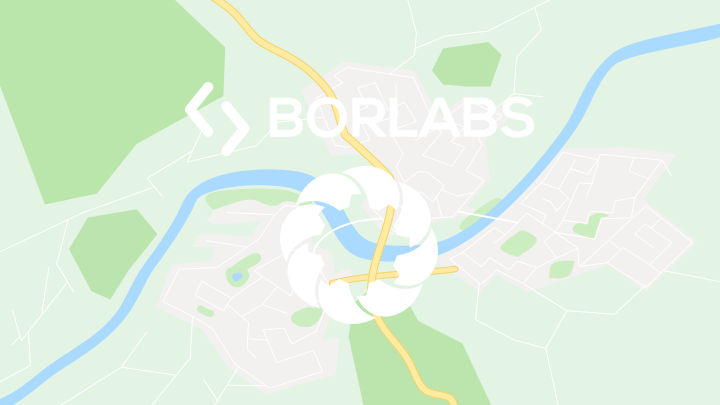
By loading the map, you accept Google’s privacy policy.
Learn more
Load map
Jasmund National Park
Here in the northeast of the island of Rügen lies the small (just 3,000 hectares “large”) but nevertheless very diverse Jasmund National Park. The park is particularly well-known and popular for its beautiful and fascinating chalk cliffs along the Baltic Sea coast. The almost vertical chalk cliffs reach a height of up to 118 meters, and the unique beech forest reaches the edge in many places, ending with a panoramic view of the sea. According to information boards in the park, the beech forest in the national park has been a UNESCO World Heritage Site since 2011 and, along with the four other beech forest areas in Germany, forms valuable ecosystems that must be protected and preserved.
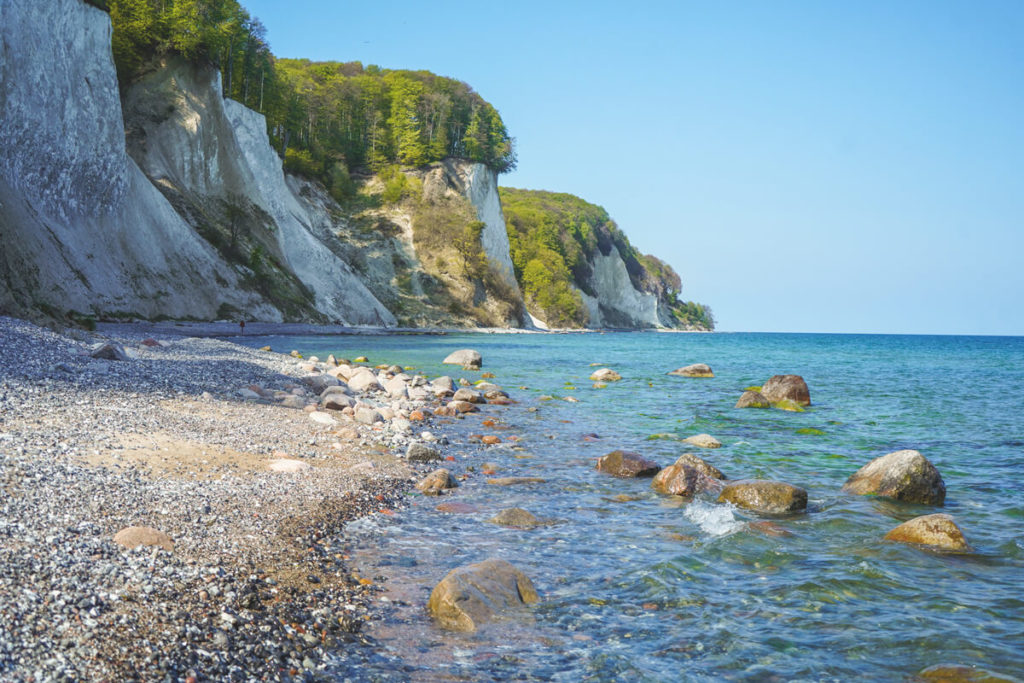
Jasmund National Park awaited us with many great viewpoints, beautiful rocky beaches and bays, a beautiful forest, and numerous opportunities to explore the park. But not only that, there are also springs, moors, streams, valleys, and small mountains. For us, the beech forest is one of the most beautiful forests in all of Germany. The park’s motto is “Let nature be nature,” and you’ll notice this when you’re there yourself. Animals and plants can develop here virtually unaffected by humans. We simply watch as nature takes its time.
National parks safeguard unique natural experience areas and simultaneously create spaces for environmental education and research. They are essential for preserving biological diversity and species richness on this earth. At the same time, the national parks increase the attractiveness of their region and contribute to its economic development.
Source: www.koenigsstuhl.com
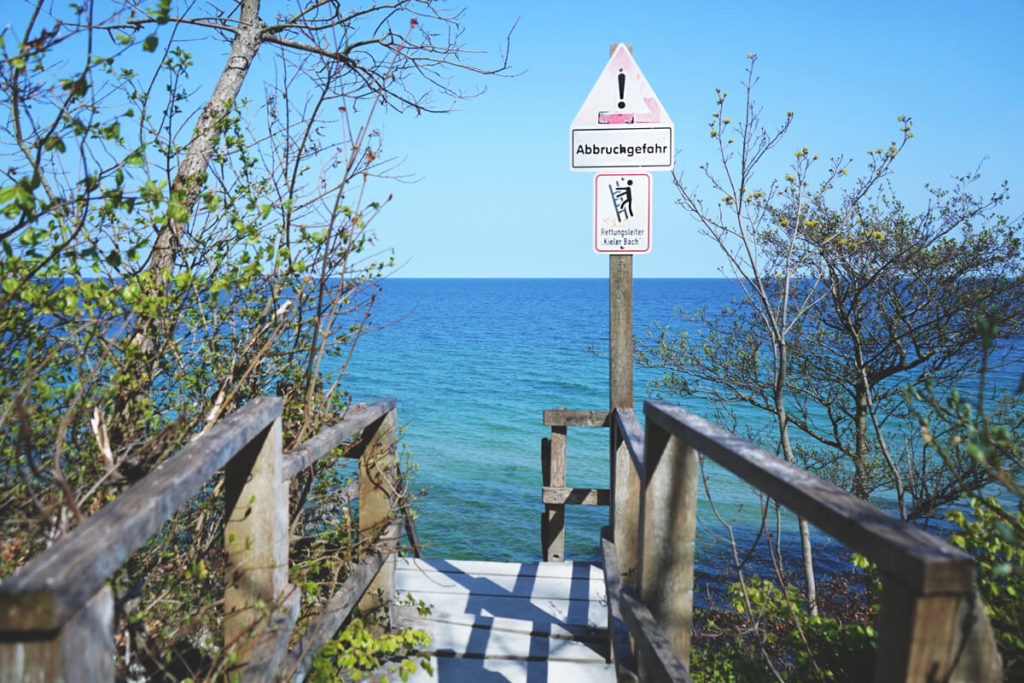
Hikes in the Park
You can explore the park on various trails and experience it up close. If you just want to see the Königsstuhl and don’t necessarily want to go hiking, you can take the bus to the Königsstuhl Information Center. If you have stamina and enjoy hiking, you should definitely choose the high-shore path and use the up to 12.1 kilometers to discover the many great highlights (Recommendation: Hike from Sassnitz to Lohme and return to Sassnitz by bus | approx. 4 hours).
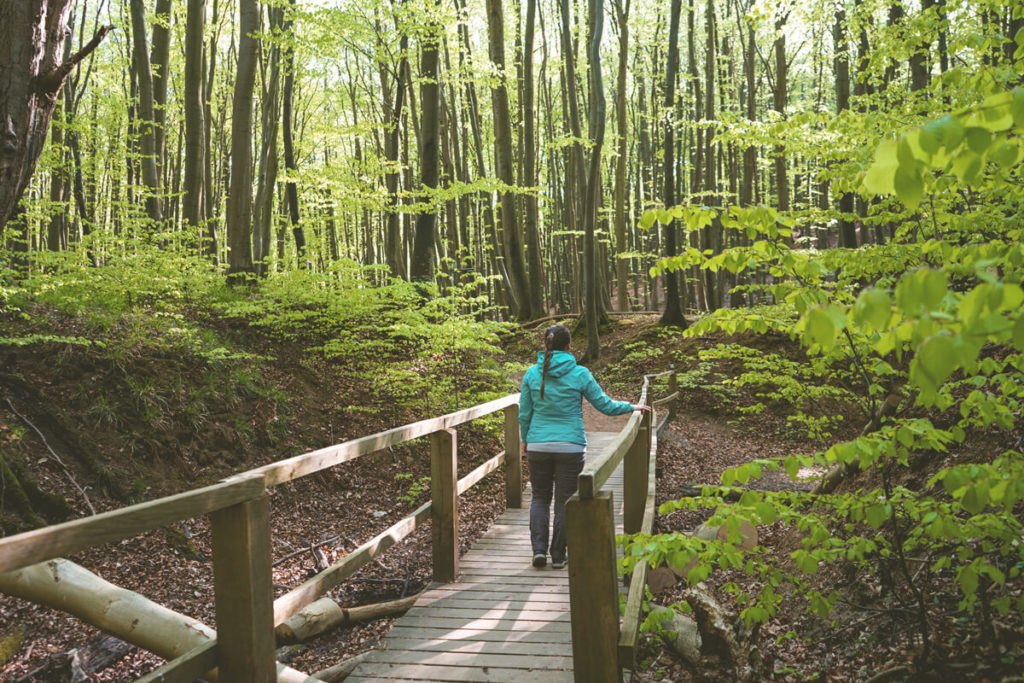
It’s best to take a closer look at the map of Jasmund National Park here. There’s even a bike path between Sassnitz, Hagen, and Königsstuhl. By car, it only goes as far as Hagen or Sassnitz. The Hagen-Lohme hiking trail also promises a varied tour. You can also find many more routes and recommendations on this website: www.komoot.de. This site is really great, and we also use it very often for hikes.
The Hochuferweg in Jasmund National Park
The most popular hiking trail in the national park is the Hochuferweg, which runs from Sassnitz to Lohme, always along the chalk cliffs. In 2012, it was even voted third among the most beautiful hiking trails in Germany (source: www.outdooractive.com). We’re definitely not hiking pros, but we also thought this trail was really amazing!
Good to know: You definitely don’t have to hike the entire route; you can also opt for shorter sections. The trail starts in Sassnitz at the “Tierpark am Nationalpark” parking lot. Get a parking ticket from the machine (if you arrived by car) and head towards the information boards. From there, the beautiful circular hike through Jasmund National Park begins.
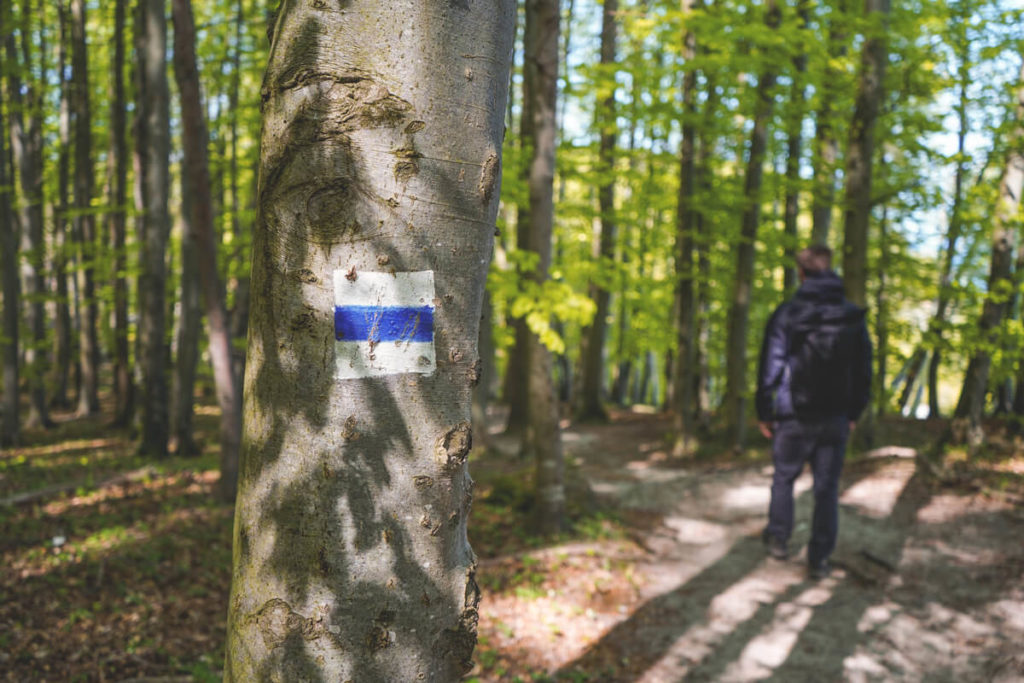
The beautiful circular hike
You can either hike through Sassnitz to the harbor/shore and then start directly on the Hochuferweg, or you can first walk through the forest to the Welterbeforum (Waldhalle). We chose the forest path, past the Lenzer Bach. On the way back, we walked directly along the shore to Sassnitz (highlights: Piratenschlucht & Wissower Klinken). It takes about 30 minutes from the starting parking lot to reach the World Heritage Forum.
There are restrooms, information materials, snacks, and drinks available here. You should bring 50-cent coins for the restrooms, as there is a fee to use them. We immediately noticed how clean and well-maintained the national park is. The restrooms at the World Heritage Forum were also very clean. Please be sure to take your trash with you or dispose of it properly in the trash can. And if you find any trash, pick it up and dispose of it properly. Nature will thank you!
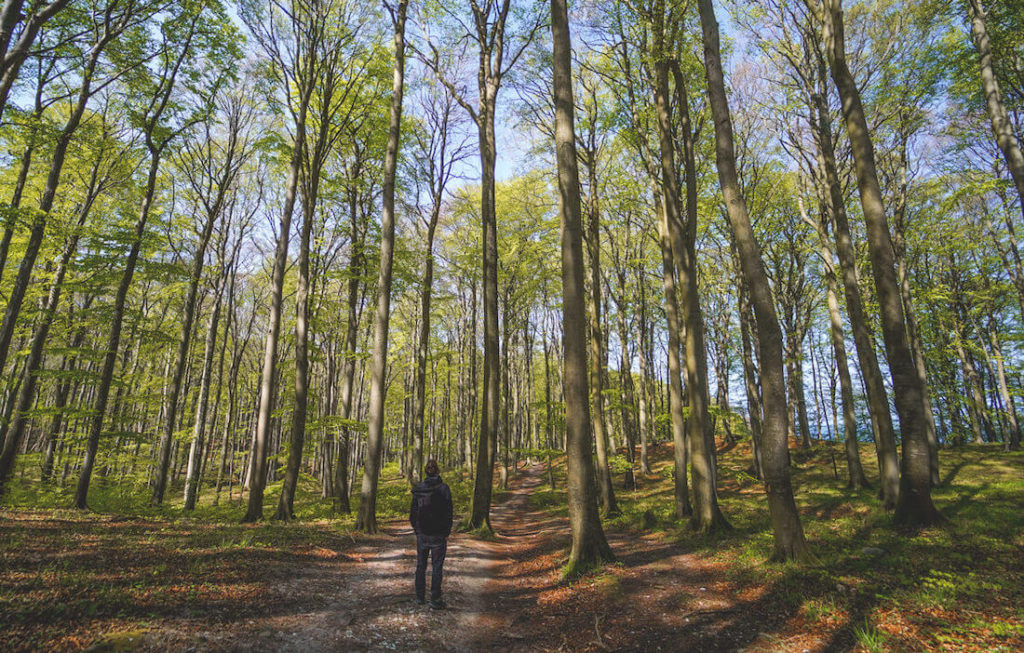
From the World Heritage Forum, the path leads directly to the coast to the Ernst Moritz Arndt Viewpoint. We enjoyed the views of the sea so much and were amazed by the beauty of nature. The water of the Baltic Sea shimmered in a beautiful turquoise-blue, simply amazing! The path then continues through the beautiful forest, always along the Kiel shore to the beach descent with a small waterfall (incidentally, it is considered the highest waterfall in Mecklenburg-Vorpommern).
You can reach this beach via wooden walkways and a staircase, and at the end you will be rewarded with a magnificent view of the steep chalk cliffs. A long tree trunk at the end of the stairs served as the perfect spot for a picnic by the sea. On the beach itself you can look around a bit; perhaps you will find a “chicken god” or some mussels. You can now turn around and start the return journey (a total of 4 to 5 hours) or move on.

Stubbenkammer & Königsstuhl
If you continue hiking along the high-bank path, you’ll follow the Kiel shore until you reach another descent with views of the cliffs. The highlights are certainly the chalk cliffs of the Stubbenkammer and the “Viktoria-Sicht” viewpoint. From there, you have a fantastic view of the famous Königsstuhl rock (€9.50 entrance fee). This is followed by the Große Stubbenkammer and the Königsstuhl Information Center. The hike doesn’t require any particular fitness, but some stamina.
You should definitely be free from vertigo on the descents, as the stairs are usually very steep. After the experience at the Königsstuhl, the high-bank path continues to Lohme through the dense, beautiful beech forest and along the cliffs. Other sights on the peninsula include Herthaburg Castle, Ranzow Castle, and Sagenstein. By the way, bus line 14 goes from Lohme back to Sassnitz.
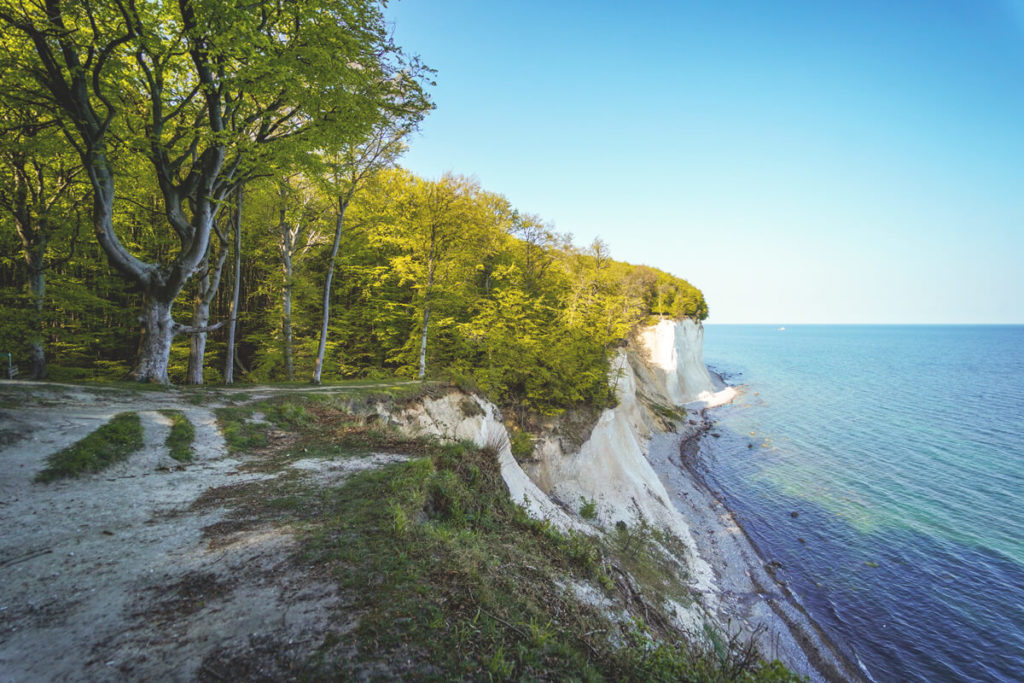
Königsstuhl National Park Center
Jasmund National Park has existed since 1990 and attracts hundreds of thousands of visitors every year. Around 250,000 visitors flock to the Königsstuhl National Park Center every year, making it the most successful in all of Germany (perhaps even in all of Europe). To ensure that nature and the animals in the park are not disturbed, attempts are made to direct the flow of visitors in an orderly manner.
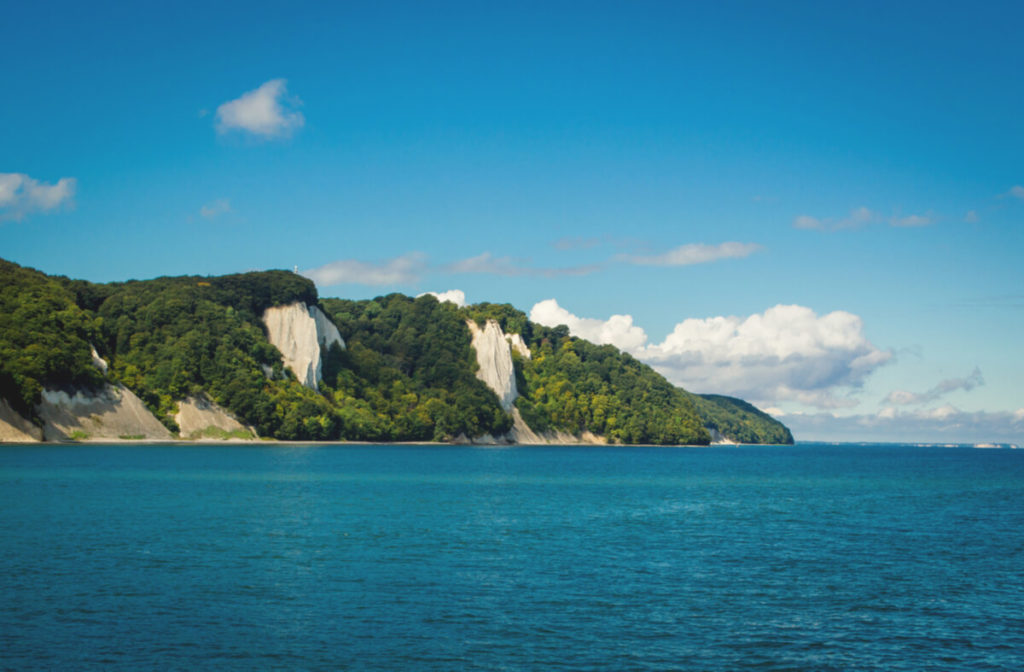
Since March 2004, the Königsstuhl National Park Center has been located in Jasmund National Park, providing information about the local nature. In addition to interactive exhibitions, a cinema, and outdoor events, there is also an observation deck, a bistro, a shop, restrooms, and guided hikes.
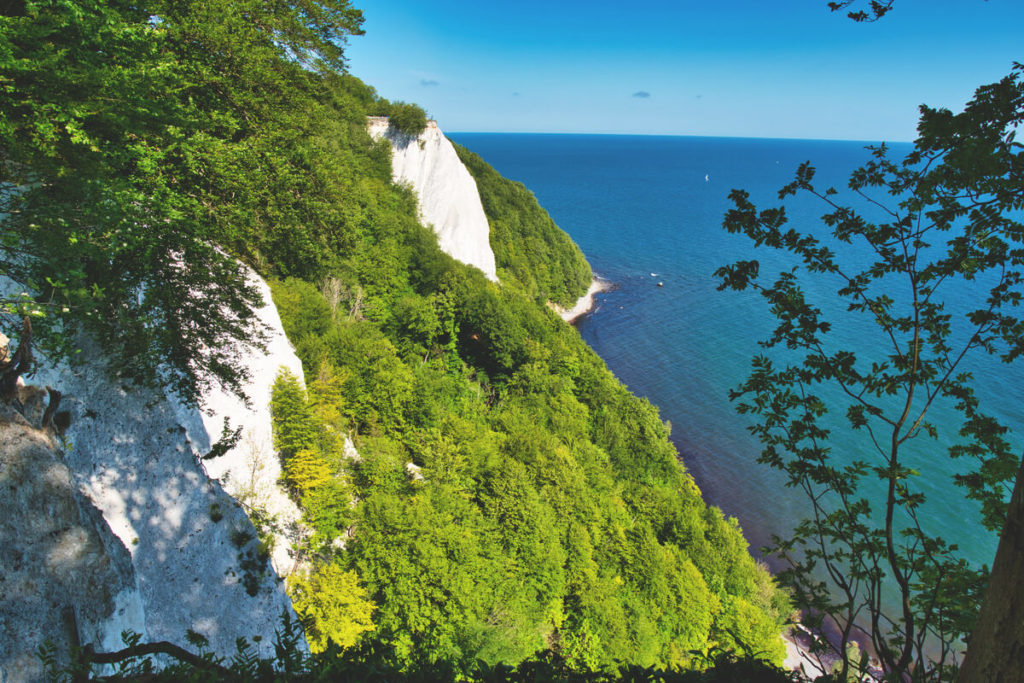
Getting there: Bus line 23 goes directly from the train station in Sassnitz to the National Park Center. If you are traveling by car, you must leave it at the “Tierpark am Nationalpark” parking lot (fee applies) and then take the bus or go hiking (8.5 kilometers). Alternatively, you can park your car in Hagen and walk the approximately 3.1 kilometers to the Königsstuhl.
Getting to the National Park
By car: If you drive, drive to Stralsund and cross the bridge to the island of Usedom. From there, continue on the B96 towards Sassnitz. In Sassnitz, drive along the main road until you reach the edge of town, where the road branches off to the left at the church. There you can follow the road to Hagen (Hagen parking lot) or park your car in the paid parking lot “Tierpark am Nationalpark”.
From Hagen, it is about a 3-kilometer walk to the Königsstuhl, or you can take the shuttle bus 19 to the National Park Center. The walk takes about 45 minutes. From Sassnitz, it is about 8 kilometers to the Königsstuhl. You can’t drive directly into the park; only shuttle buses and coaches are permitted. You can book a rental car here, among other places: billiger-mietwagen.de*. We’ve had nothing but positive experiences with this platform for years.
Train & Bus:Take the IC to Stralsund. There, change to the regional train to Sassnitz. Your tour can either end at the Sassnitz train station or take bus 23 to Königsstuhl. Alternatively, you can take the IC to Binz and then take bus 22 to Königsstuhl and then to Sassnitz. From Berlin, you can also travel comfortably and without transfers with Flixbus for €13.99. A good overview can be found here: fromAtoB*.
Best time to visit Rügen
The island of Rügen is bustling year-round, as each season has its own unique charm. We generally recommend spring and autumn for hikes, when it’s not so hot and nature is at its most beautiful. During the summer holidays and during vacation times in general, there’s a lot going on on the island; after all, Mecklenburg-Western Pomerania is the number one travel destination in Germany. Most vacationers arrive between April and October, with peak season between June and August.

If you’re looking for peace and relaxation, winter could be the right season for you. Then you can skillfully combine a wellness and active holiday. You’ll get your money’s worth, especially in the spa and seaside resorts of Sellin, Göhren, Binz, and Sassnitz. But if you prefer sun, sea, and a beach holiday, you should of course choose the summer months. The park is said to be beautiful in autumn, when the forest glows in unique autumn colors (warm yellows and reds). We definitely want to do the hike again in autumn.
Accommodation in Sassnitz
You can choose various locations on the island of Rügen as your starting point. Sassnitz is located right outside the gates of the national park and very close to the water. The town is charming and offers several restaurants, cafés, shops, and vacation apartments. The port city offers everything a vacationer could need. The town hall, the old fishing port, the suspension bridge to the harbor, St. John’s Church, and the green and white lighthouse are all very nice to see.
Accommodation in Lohme
Lohme is at the end of the Hochuferweg (or the beginning, depending on how you look at it). Lohme is a small community in the north of the island of Rügen, home to only about 500 people. Lohme was opened in 1855 as the first seaside resort on the island of Rügen. Even today, the village captivates with its original charm and history, which can be seen in the lovingly furnished local history room. If you set up your base camp in Lohme, you shouldn’t miss the northernmost point of Rügen, Cape Arkona. The boulder beach and Lohme’s former fishing port are also popular destinations.
Conclusion on Jasmund National Park
We highly recommend a visit to Jasmund National Park. The park is beautiful, and it’s incredibly fun to hike through the forest and discover magnificent views from the cliff edge again and again. The steep chalk cliffs are a must-see; nature has created something unique here. Because rock falls occur repeatedly, pieces of the white chalk cliffs end up in the sea, which is the reason for the turquoise waters of the Baltic Sea. We visited the national park in spring and highly recommend the season (April, May). However, if you need accommodation on the island, you should book early.